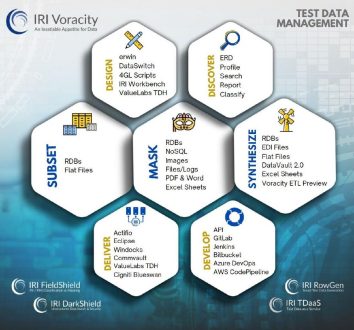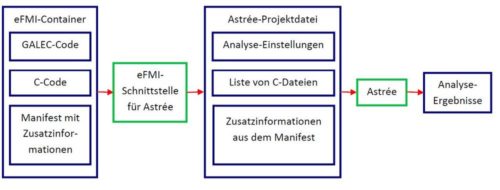How to manage large amount of video data with Roxy from MoovIT
Why does this small tool promise such huge benefits for Premiere editing tasks?
Fast, decentralised and interconnected workflows are becoming increasingly commonplace in video post-production environments, but these processes frequently hit physical hurdles when it comes to editing and exchanging large video files. Despite the high data volumes involved, there is a clear need for fast data transfer and transmission rates, not to mention error-free file editing and processing. The greater the effort involved, the greater the costs. MoovIT’s software developers have found an answer to this challenge: a proxy panel that paves the way for Adobe Premiere users to complete their editing tasks with reduced data transfer rates, in a highly automated proxy workflow. At the same time, the solution can automatically transfer all editing and formatting information (such as playout data) to the original hi-res files – in full, and entirely in the background. This proxy tool – named Roxy – is already being used in the sports production industry. Now, Roxy is being made available to all Adobe Premiere users.
What does this solution look like?
Hi-res and proxy files can be edited separately, while the ‘proxy cut’ is transferred to the original file in the background
Roxy is a proxy panel implemented within Premiere. When importing a high-resolution (e.g. Full HD) file, Premiere can create a proxy (effectively, a ‘preview’) file which contains exactly the same image and sound content, but with significantly higher compression and/or a lower resolution, e.g. in MP4 format. Editors working in Premiere can access both files equally, regardless of the codec, and switch seamlessly between the two. Depending on where the file will be used, the proxy may already meet the relevant quality requirements. Moreover, it is also possible to edit in Premiere exclusively using the proxy file.
Why is the Roxy panel a perfect addition to Premiere’s proxy function?
Clear benefits include presets that reduce the need for manual settings adjustments, plus additional features such as multi-audio
Theoretically, proxy-based editing in Premiere is also possible without Roxy. However, users would then need to perform many tasks manually, such as importing files, creating presets, defining paths, starting conversion processes, checking compatibility, checking the target folder for completeness, and more. This makes processing significantly more complicated, and many features such as multi-audio are not available at all – making for a relatively cumbersome experience in practice.
How does Roxy help?
Presets automate processes
The panel monitors all projects and files. After defining the presets once, the proxies are created automatically without any further manual commands. Accordingly, the files are then sent automatically to the correct destination, without needing to be routed via the Media Encoder.
Work locally or in the cloud
Roxy supports both local and remote cloud-based working. Files are stored at the target locations depending on how further processing and post-production is organised. For decentralised projects, this location may be LucidLink, for example. Once the presets have been created, they are executed automatically. And the files themselves are produced both rapidly and in a very high quality.
Background hardware encoder ensures low CPU loads
A hardware encoder running in the background enables very high processing power during conversion processes. This is vital, especially when working with large data volumes. In contrast to the Media Encoder, the CPU load is very low. All Apple computers and many PCs already have the necessary hardware, and for the rare occasions where this is not the case, two presets ensure that everything runs smoothly and safely. The first preset applies when hardware acceleration is available – which is the case in most scenarios. The second preset steps in if the first option doesn’t work, with encoding performed in the ‘traditional’ way by utilising the CPU. These fall-back solutions also ensure that users always retain the ability to customise their settings.
Multi-audio – a real Roxy USP
Roxy can do what Adobe Premiere can’t: it supports multi-audio, a critical component for professional editing projects. Roxy allows users to create proxies from clips with 4, 8 or even 16 audio tracks, and to connect these tracks to the hi-res material. Premiere can only process 2 audio channels with its own proxy function.
The significant advantage of the Roxy workflow with H.264/H.265 is the combination of high image quality and heavy compression of the image files. This, together with the professional-grade audio track functionality and the full scope of Premiere’s features, enables perfect editing with the ‘proxy cut’.
Proxy location
This is where users can define where the proxy files will be stored. The encoding parameters are preconfigured, but can also be adjusted according to individual user requirements.
Whitelist copy
This is where a list of files is stored for which no automatic proxy can or should be created. Users can manually add to this list if needed. These files may include, for example, audio or image files with the extensions WAV, MP3, PNG and JPG, but users may also choose to add small MP4 video files to this list if no proxy is required. Instead, files with these extensions are copied directly to the destination. The goal is all required media – including video, audio and image files in their entirety – should automatically be available in the target folder. In addition, an automated process ensures that image files are copied to the proxy storage even if no video file is available. This guarantees that all media in the project is available for the next steps of processing and post-production.
Whitelist encoder
These are all file types for which proxies should be created automatically, such as MXF, MOV, MTS and, if necessary, MP4 files. This list can also be organised according to the user’s specific criteria.
Export sequence
This is where users can define and store export parameters that correspond to the Media Encoder – greatly simplifying, accelerating and safeguarding the export process. The preset contains all encoding parameters as well as the path in the file system. Once defined, users can start an export with a simple mouse click.
Usability first
The Roxy panel is designed to make life simple. It works in the background and creates proxies, allowing users to easily work with their high-resolution material. Once the editing process is complete, the proxy is automatically added to the project. Roxy imports the file, cleans up, stores the file correctly, connects, checks for completeness and can recreate the file in case of accidental deletion.
All process steps, such as trimming, compiling and effects editing, can be transferred directly to the hi-res file in full. This enables flexible, dynamic productions with manageable workloads – even when using high-quality material. And if hi-res material is lost along the way for any reason, the proxy file is still available, albeit with slightly reduced quality.
Find out more and check it out: https://roxy-proxy.com/
MoovIT ist der Video- und IT-Dienstleister für Broadcast und Industrie, MoovIT Software Products (MSP) ist ein Tochterunternehmen der MoovIT GmbH.
Die Unternehmen mit Sitz im Kölner Schanzenviertel sind spezialisiert auf die Entwicklung und den Support von Workflows rund um Postproduktion, News und Archivierung an der Schnittstelle von Video und IT. MoovIT und MSP sind professionelle Partner, wenn es um die Optimierung und Automatisierung im Video-Projektmanagement geht. Insbesondere für die kollaborative Videobearbeitung in großen Produktionsumgebungen wie bei Sportberichterstattungen werden kontinuierlich neue Softwarelösungen entwickelt, die sich den Workflows der Kunden perfekt anpassen. Darüber hinaus bietet MoovIT innovative Tools zur webbasierten Videopersonalisierung, -lokalisierung und -regionalisierung.
Zum Kundenkreis zählen Sendeanstalten, Produktionshäuser, Sportveranstalter, Agenturen und Industrieunternehmen.
Für sie realisiert MoovIT den WORKFLOW IM FLOW.
MoovIT GmbH
Schanzenstr. 29
51063 Köln
Telefon: +49 (221) 30200210
Telefax: +49 (221) 30200299
http://moovit.de
Marketing
E-Mail: a.dennert@moovit.de
Presse/PR
E-Mail: h.gante@moovit.de
![]()




